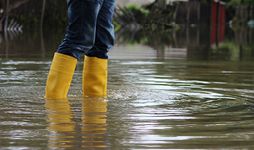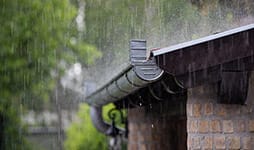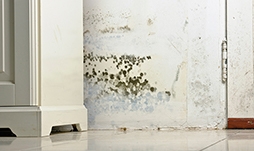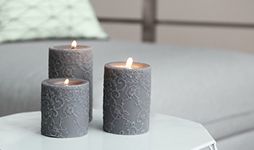Escape of water is a common home insurance claim. In fact, 26% of all MORE THAN home insurance claims between January and March 2023 were for escape of water.
Unfortunately, even the smallest leak can cause significant damage to your home. To help protect your property (and your bank balance!) this guide will show you what to look out for and provide you with tips to prevent a damaging leak.
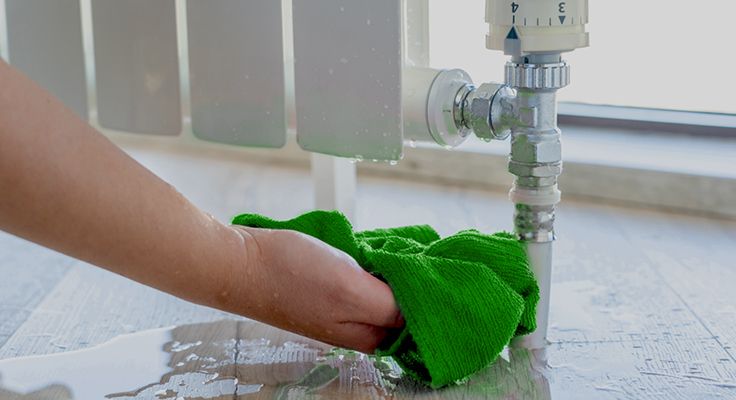
What is escape of water?
‘Escape of water’ is how insurers describe a claim where water has escaped and caused damage to your home. Causes include worn pipe joints and valves and leaks from home appliances.
Is escape of water the same as flooding?
Escape of water and flooding have different causes and different levels of damage. This is why insurance companies distinguish between them.
An external water source, such as a river bursting its banks or heavy rainfall may lead to flooding. This can be very destructive and can cause widespread damage to homes and businesses.
Escape of water is usually caused by an internal water source, such as a burst pipe or leaking appliance. Not as destructive as flooding, but it can still cause significant damage.
It’s important to check your policy for escape of water and flooding cover and exclusions.
Is escape of water covered by buildings or contents insurance?
Our home insurance covers water damage as standard.
If a water leak damages the structure of your home, buildings insurance may cover you. This includes things like soaked or warped floorboards.
If it damages your household items, contents insurance may cover you. This includes things like your TV or carpet.
Buildings and contents covers both your items and home.
What does escape of water insurance cover?
MORE THAN Home Buildings and Contents insurance covers you for the following:
- Freezing of fixed water or fixed heating systems such as burst pipes
- Water leaks from washing machines and dishwashers
- Water leaks from fixed water or fixed heating systems such as pipes and boilers
Cover can vary between insurers, so it’s important to check what a policy does and doesn’t include.
The following escape of water exclusions apply with MORE THAN Home Insurance policies:
- The escape of water excess that applies to your policy
- Damage that occurs while your house is unoccupied or unfurnished for more than 60 days in a row
- Damage to the appliance or system the water escapes from, unless freezing was the cause
Common causes of escape of water
The following are some of the most common causes of escape of water in a home:
- Blocked sink and bath drains caused by a build-up of cooking fat, oil, coffee grounds, food, soap suds and hair
- Leaks from showers or wet rooms
- Leaks from loft tanks when ballcocks stick causing overflow
- Defective appliances such as washing machines and dishwashers and their associated pipework
- Leaking central heating system
- Worn pipe joints/valves
- Frozen and burst pipes in the roof space due to insufficient insulation
- Overflowing gutters or down pipes
How to prevent escape of water damage
Reduce the risk of damage from from escape of water by addressing the common causes.
Here are some ways to prevent water-related problems in your home:
Burst water pipes caused by freezing conditions, normal use or ageing, or damage:
- Ensure proper insulation of pipes, especially in colder areas
- If your home will be empty for a few days, keep the central heating on low, at around 15 degrees Celsius. If you’re going away for more than 14 days, turn the mains stopcock off and drain the water system completely
- Get a frost stat fitted to your central heating system in cold areas where pipes are vulnerable. This will switch your heating on when the temperature falls below a set level
Blocked sink and bath drains caused by a build-up of cooking fat, oil, coffee grounds, food, soap suds, and hair:
- Clean and maintain drains regularly to prevent blockages
- Avoid disposing of cooking fat, oil, coffee grounds, or food scraps down the sink or drain
- Use drain guards or strainers to catch debris and hair
Leaks from showers or wet rooms:
- Ensure proper installation by qualified professionals
- Inspect seals, grouting, and caulking for signs of damage or wear
- Quickly address any leaks or water damage
Leaks from loft tanks when ballcocks stick causing overflow:
- Inspect ballcocks for proper functionality on a regular basis
- Ensure proper maintenance of the ballcock mechanism
- Replace faulty ballcocks to prevent overflow
Defective appliances such as washing machines and dishwashers and their associated pipework:
- Inspect and maintain appliances regularly to ensure proper functioning
- Check hoses and connections for leaks or signs of wear
- Replace damaged or worn-out components
Leaking central heating system such as radiators or boilers:
- Schedule regular maintenance and inspections for your heating system
- Address any leaks or issues right away
- Maintain appropriate water pressure and ensure proper installation of components
Worn pipe joints/valves:
- Inspect pipe joints and valves regularly for signs of wear or damage
- Replace worn-out or faulty joints and valves as soon as possible
- Consider professional installation or repair for complex plumbing connections
Insufficient insulation of pipes in the roof space:
- Consider putting fibreglass at least 6 inches (150 mm) thick, or non-combustible granules in any loft area. Plus, get all the pipes and tanks lagged by a professional
- If it’s very cold, consider opening the loft trap door to let warmer air from other parts of the house circulate in the loft
- Inspect insulation and address any issues right away
Overflowing gutters or down pipes:
- Arrange for regular clearing of gutters and down pipes, removing debris and blockages
- Ensure proper installation and alignment of gutters and down pipes
- Consider installing gutter guards to prevent debris accumulation
How to detect a leak
The earlier you detect and deal with leaks, the less the damage caused.
Here are 3 ways to check for leaks:
- Check your water meter: turn the water off inside and outside the home by checking the stop valves. Record the water meter reading, wait for 15 minutes then check the meter again. If the meter shows water usage during the test, investigate for a possible leak
- Inspect your pipes: examine your pipework for deterioration, cracks or bulges. Investigate any damp patches on ceilings as soon as possible
- Check behind kitchen fittings and cupboards: look for signs of water such as small puddles or leaking pipe joints
Early detection and quick action can help prevent potential issues that could lead to water damage.
Leakbot - what is it?
There are various high-tech solutions available to help you detect and prevent leaks in your home.
Leakbot is one example. This gadget aims to alert you to drips, so that you can address the problem before it becomes a bigger issue.
Clip the box to the pipe near your stop tap and Leakbot will detect any change in the flow of water through your pipes. You can even receive alerts to your phone for 24/7 peace of mind.
What to do if you have a leak
Before calling a plumber and your insurer, there are steps you can take to help reduce the damage:
- Turn off the main water supply to stop the flow of water and prevent further damage
- Turn off the power and avoid electrical appliances. Get in touch with an electrician first if you have to stand in water to turn off the mains electricity
- Place buckets or towels to catch dripping water, preventing further spread
- Take photos or videos of the leak and any damage, for insurance purposes
- Contact your insurer. If you're covered with MORE THAN, call our 24/7 claims helpline*
How to make a claim
Experiencing a water leak in your home can be stressful, but we’re here to help make things right again.
To find out how to make a claim or for 24/7 emergency support, visit our home insurance claim page.
